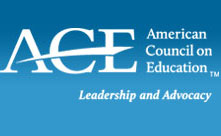
An apprenticeship is a system of training a new generation of practitioners of a trade or profession with on-the-job training and often some accompanying study. Apprenticeships can also enable practitioners to gain a license to practice in a regulated profession. Most of their training is done while working for an employer who helps the apprentices learn their trade or profession, in exchange for their continued labor for an agreed period after they have achieved measurable competencies. Apprenticeship lengths vary significantly across sectors, professions, roles and cultures. People who successfully complete an apprenticeship in some cases can reach the "journeyman" or professional certification level of competence. In others can be offered a permanent job at the company that provided the placement. Although the formal boundaries and terminology of the apprentice/journeyman/master system often do not extend outside guilds and trade unions, the concept of on-the-job training leading to competence over a period of years is found in any field of skilled labor.

A standardized test is a test that is administered and scored in a consistent, or "standard", manner. Standardized tests are designed in such a way that the questions, conditions for administering, scoring procedures, and interpretations are consistent and are administered and scored in a predetermined, standard manner.

The General Educational Development (GED) tests are a group of four subject tests which, when passed, provide certification that the test taker has United States or Canadian high school-level academic skills. It is an alternative to the US high school diploma, HiSET, and TASC test. The GED Testing website currently does not refer to the test as anything but "GED".
Educational assessment or educational evaluation is the systematic process of documenting and using empirical data on the knowledge, skill, attitudes, and beliefs to refine programs and improve student learning. Assessment data can be obtained from directly examining student work to assess the achievement of learning outcomes or can be based on data from which one can make inferences about learning. Assessment is often used interchangeably with test, but not limited to tests. Assessment can focus on the individual learner, the learning community, a course, an academic program, the institution, or the educational system as a whole. The word 'assessment' came into use in an educational context after the Second World War.
School-to-work transition is a phrase referring to on-the-job training, apprenticeships, cooperative education agreements or other programs designed to prepare students to enter the job market. This education system is primarily employed in the United States, partially as a response to work training as it is done in Asia.
CIM or Cim may refer to:

A Hauptschule is a secondary school in Germany, starting after four years of elementary schooling, which offers Lower Secondary Education according to the International Standard Classification of Education. Any student who attends a German elementary school can go to a Hauptschule or Gesamtschule, while students who want to attend a Realschule or Gymnasium need to have good marks in order to do so. The students spend five to six years at the Hauptschule, from 5th to 9th grade. They finish around age 15 to 17.

Century High School is located in Hillsboro, Oregon, United States. It was built in 1997. Its principal is Martha Guise. The school's mascot is the jaguar, and its colors are black, teal, and silver. As of 2016, the school's graduation rate was 86%.
In an educational setting, standards-based assessment is assessment that relies on the evaluation of student understanding with respect to agreed-upon standards, also known as "outcomes". The standards set the criteria for the successful demonstration of the understanding of a concept or skill.
An exit examination is a test that students must pass to receive a diploma and graduate from school. Such examinations have been used in a variety of countries; this article focuses on their use within the United States. These are usually criterion-referenced tests which were implemented as part of a comprehensive standards-based education reform program which sets into place new standards intended to increase the learning of all students.
The National Center on Education and the Economy (NCEE) is an American not-for-profit, policy analysis and development organization based in Washington, DC that first opened in 1988 in Rochester, New York. Its precursor, the Carnegie Forum on Education and the Economy, was established by the Carnegie Corporation of New York in 1985. The National Board for Professional Teaching Standards was established in response to a 1986 report by Marc Tucker, "A Nation Prepared: Teachers for the 21st Century." This Board established the NCEE in 1988 with Tucker as founder, CEO, and president. The NCEE's stated mission is,"To analyze the implications of changes in the international economy for American education, formulate an agenda for American education based on that analysis and seek wherever possible to accomplish that agenda through policy change and development of the resources educators would need to carry it out."
Education reform in the United States since the 1980s has been largely driven by the setting of academic standards for what students should know and be able to do. These standards can then be used to guide all other system components. The SBE reform movement calls for clear, measurable standards for all school students. Rather than norm-referenced rankings, a standards-based system measures each student against the concrete standard. Curriculum, assessments, and professional development are aligned to the standards.
The National Skill Standards Board (NSSB) was a coalition of community, business, labor, education, and civil rights leaders. It was tasked with building a national voluntary system of skill standards, assessment, and certification to enhance the ability of the United States workforce to compete effectively in the global economy.

Norma Jean Paulus was an American lawyer and politician in the state of Oregon. A native of Nebraska, she was raised in Eastern Oregon before becoming a lawyer. A Republican, she first held political office as a representative in the Oregon House of Representatives, and then became the first woman elected to statewide public office in Oregon when she became Oregon Secretary of State in 1977. Paulus later served as Oregon Superintendent of Public Instruction for nine years. She made unsuccessful bids to become Governor of Oregon and United States Senator. Prior to her death on February 28, 2019, Paulus lived in Portland, where she was involved with several non-profit groups and sponsored a ballot measure to create open primaries in Oregon's statewide elections.
The National Commission on Excellence in Education produced the 1983 report titled A Nation at Risk. It was chaired by David P. Gardner and included prominent members such as Nobel prize-winning chemist Glenn T. Seaborg.
Susan Castillo is a politician in the U.S. state of Oregon who most recently served as Superintendent of Public Instruction from 2003 to 2012. A Democrat, she also served from 1997 to 2003 in the Oregon State Senate. Before entering politics, she had pursued a career in broadcast journalism, first for Oregon Public Broadcasting, and later for KVAL-TV in Eugene, Oregon. Upon her resignation as superintendent to pursue an opportunity in the private sector, the position was eliminated as an elective office.
Marc S. Tucker was the president and CEO of the National Center on Education and the Economy from 1988 until January 1, 2019. He is active in education reform and benchmarking the policies and practices of the countries with the best education systems in the world.

A high-stakes test is a test with important consequences for the test taker. Passing has important benefits, such as a high school diploma, a scholarship, or a license to practice a profession. Failing has important disadvantages, such as being forced to take remedial classes until the test can be passed, not being allowed to drive a car, or difficulty finding employment.
A high school diploma is a North American academic school leaving qualification awarded upon high school graduation. The high school diploma is typically studied for over the course of three to four years, from grade 9 to grade 12. The diploma is typically awarded by the school in accordance with the requirements of the local state or provincial government. Requirements for earning the diploma vary by jurisdiction, and there may be different requirements for different streams or levels of high school graduation. Typically they include a combination of selected coursework meeting specified criteria for a particular stream and acceptable passing grades earned on the state exit examination.
In U.S. education, deeper learning is a set of student educational outcomes including acquisition of robust core academic content, higher-order thinking skills, and learning dispositions. Deeper learning is based on the premise that the nature of work, civic, and everyday life is changing and therefore increasingly requires that formal education provides young people with mastery of skills like analytic reasoning, complex problem solving, and teamwork.